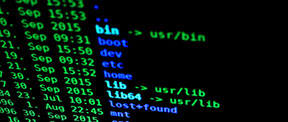**Exploring the Locate Command: Find Files and Directories Efficiently**
In the vast expanse of the Linux command-line arsenal, there lies a remarkable tool known as locate. This command serves as a powerful search engine for your system’s files and directories, allowing you to locate the precise location of a file even if you have forgotten its exact path.
**How Locate Works**
Unlike the find command, which meticulously scans every directory in your system, locate relies on a pre-built database to expedite its search. This database, known as the “locate database,” is periodically updated to include the paths of all files and directories on your system. By utilizing this database, locate can swiftly zero in on the target file or directory.
**Essential Syntax**
The basic syntax for using locate is:
“`
locate
“`
Where `
**Example Uses**
Locate can come in handy in a multitude of scenarios. Here are a few examples:
* **Find a missing file:** Say you have misplaced an important document. You might not remember its exact name or location. Simply type:
“`
locate filename.txt
“`
Locate will swiftly provide you with a list of all files containing “filename.txt” in their paths.
* **Locate a specific directory:** Sometimes, you may need to recall the path to a particular directory. To do this, use:
“`
locate /directory/name
“`
Locate will lead you to the full path of the directory.
* **Search for multiple patterns:** You can combine multiple search terms using the pipe character ‘|’. For instance:
“`
locate file1.txt | file2.txt
“`
This command will list all files containing either “file1.txt” or “file2.txt” in their paths.
* **Exclude certain directories:** To narrow down your search, you can exclude specific directories from the scanning process. Use the ‘-d’ option followed by the directories you wish to exclude:
“`
locate -d /home/user/* filename.txt
“`
This command will locate “filename.txt” in all directories except for those under “/home/user”.
**Beyond Tree and Locate**
While tree and locate are both indispensable tools for navigating your file system, there are several other commands that offer unique capabilities:
* **apropos:** Provides a list of man pages that are relevant to a given search term.
* **find:** Performs a more comprehensive search by recursively scanning directories.
* **fortune:** Displays a random quotation or fortune message.
* **findmnt:** Lists all mounted filesystems and their mount points.
* **ls:** Lists the contents of a directory.
* **chroot:** Changes the root directory for the current process.
* **ping:** Checks the connectivity to a host or network address.
* **chfn:** Modifies the user information in the passwd file.
* **lspci:** Lists all PCI devices in the system.
* **cat:** Concatenates files and prints their contents.
* **tc:** Configures Linux networking devices.
* **ncftp:** A command-line FTP client.
* **jobs:** Lists all background jobs.
* **chsh:** Changes the login shell of the current user.
* **lsattr:** Lists file and directory attributes.
* **netstat:** Displays network statistics and connections.
* **uniq:** Removes duplicate lines from a file or input.
* **yes:** Outputs a repetitive affirmative response (e.g., for automated scripts).
* **findmnt:** Lists mounted filesystems.
* **grep:** Searches for patterns within files.
**Conclusion**
The locate command is an invaluable tool for quickly locating files and directories, even when you don’t know their exact paths. By understanding its syntax and capabilities, you can effectively search your system and retrieve the information you need. Remember, there are numerous other Linux commands that complement locate and offer even more advanced file management and system information retrieval capabilities.
